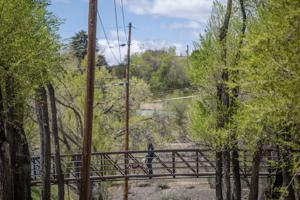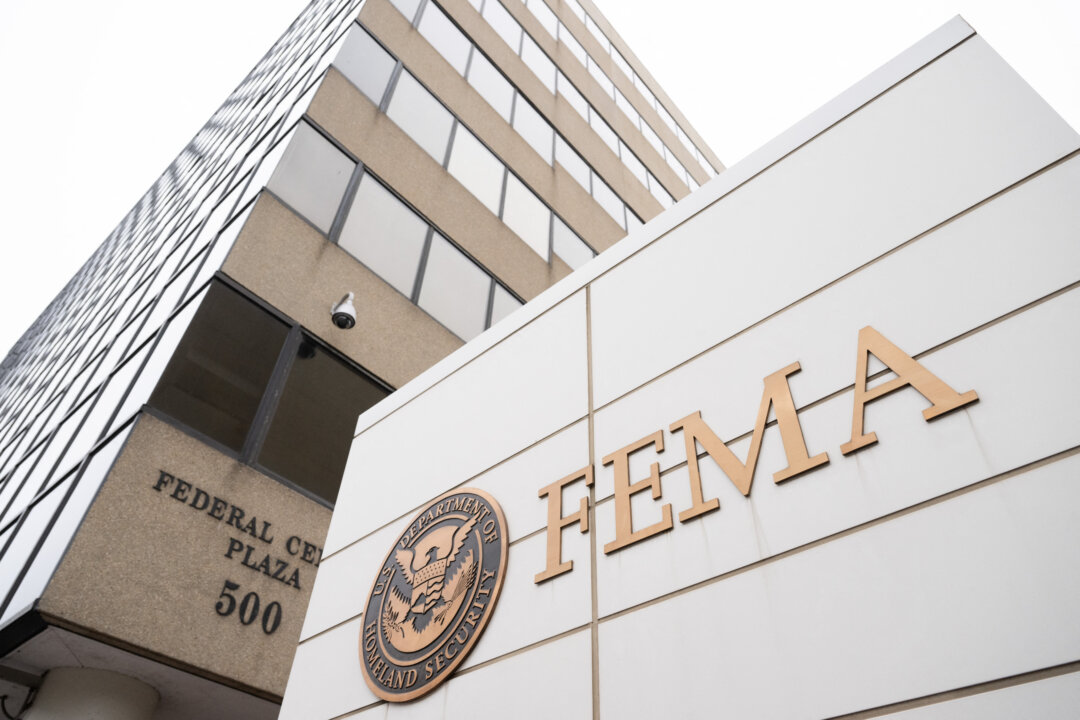“It’s tough to be a big, water-loving tree in the desert,” said Ryan Pitcher, referring to the graceful, aging cottonwoods that arch over the Santa Fe River park through downtown Santa Fe. They are some of nearly 8,000 trees that the certified arborist helps manage for the city. Cottonwoods were among native trees that lined rivers in what is now New Mexico prior to the arrival of Spanish colonists, who brought with them various types of fruit trees to help sustain their remote communities.
However, the residents began overusing many of the trees they found for fuel and shelter, so by the time American settlers arrived via the Santa Fe Trail, many of the native shade trees were gone, says a study funded by the U.S. Forest Service.

Among new arrivals who helped transplant native cottonwoods and other riparian species in the area for shade was the Rev. Jean-Baptiste Lamy, the French-born former missionary who was sent out from the leafy Ohio River Valley in 1850 to become the territory’s first Catholic bishop. As part of his efforts to create what he considered critical elements of civilization, he also was responsible for bringing in new species of shade trees, along with various other plantings throughout the community of Santa Fe.
His horticultural efforts here were joined in 1868 by New Mexico’s first tree nursery. It can be easy to overlook how human efforts across many years have helped create stands of trees that now shade homes and parks and beautify streets in this widely admired capital of Southwestern charm. “The desert environment is one of the only environments where humans reliably increase tree canopy,” Pitcher observed.
And, on this Arbor Day, this historical tendency should serve as an inspiration to do what forward-thinking and environmentally minded people here and elsewhere have been doing every spring for many a decade: Plant a tree. Or at least take the time to prune and water ones we’ve already got, considering the many benefits trees provide. It’s not just the psychological factor — on a personal level, it has been proven trees calm us and reduce our stress levels — there is also the contribution to the health of our community and our warming planet.
In addition to providing shade that cools our urban areas, trees are a cost-effective way to pull carbon dioxide out of the atmosphere. They also support wildlife such as birds and pollinators. Even in a time of increasing droughts and limited water resources, it’s easy to argue that beneficial trees are worth every drop they get.
You can help by putting down mulch to ensure more of the precious water gets into the soil where it can reach the roots. If you don’t know where to begin, plenty of resources exist to offer advice on how and where to plant trees and tend to them. For example, there is the local office of the Cooperative Extension Service of the U.
S. Department of Agriculture. Santa Fe has a Municipal Tree Board that maintains an online list of trees that can be expected to grow acceptably in the area, given proper siting and care.
Picking the right type of tree to plant, of course, is an important consideration. One species that doesn’t need much human help getting established is the fast-growing but controversial Siberian elm, a self-propagating variety that literally has been on government hit lists. Introduced to New Mexico during the Dust Bowl, and promoted during the 1930s by former New Mexico Gov.
Clyde Tingley through publicly funded giveaway programs, the native of Mongolia’s Gobi Desert later was classified by the New Mexico Department of Agriculture as a noxious weed. The city of Santa Fe more than a decade ago began an effort to eradicate them. Around this time of year, locals experience a blizzard of pale-yellow seed pods that blow everywhere by the thousands, pooling on porches, clinging to spiderwebs and causing a general nuisance.
Some of these seeds inevitably sprout saplings that can grow over 70 feet and spread roots that can become the bane of homeowners and plumbers. But, if you look around, you’ll notice we would have far less shade without them. Nate McDowell, a former Los Alamos National Laboratory scientist who led a Southwestern tree study, told The New Mexican a few years ago that some researchers and arborists are rethinking the value of this hardy tree.
Climate change could leave New Mexico’s high desert nearly bald as various other tree species die off in coming decades. “Do you really want to cut down something that is doing OK when other things are dying?” McDowell asked. That’s something to consider this Arbor Day.
Meantime, keep doing what you can to contribute to the growth and maintenance of Santa Fe’s trees. Your neighbors and our descendants will thank you..
Politics

Plant a tree — the planet will thank you

Even in a time of increasing droughts and limited water resources, it’s easy to argue that beneficial trees are worth every drop they get.















